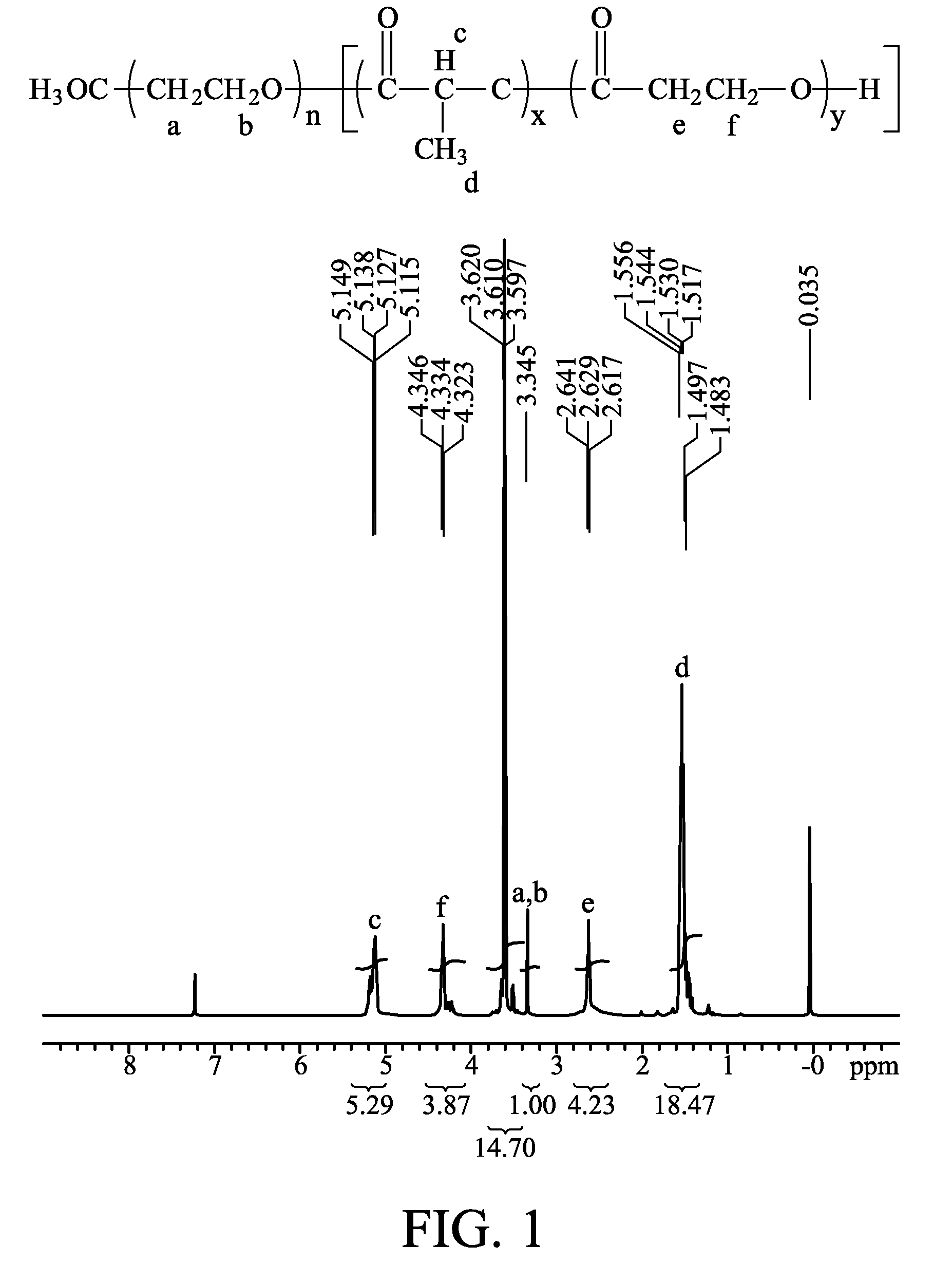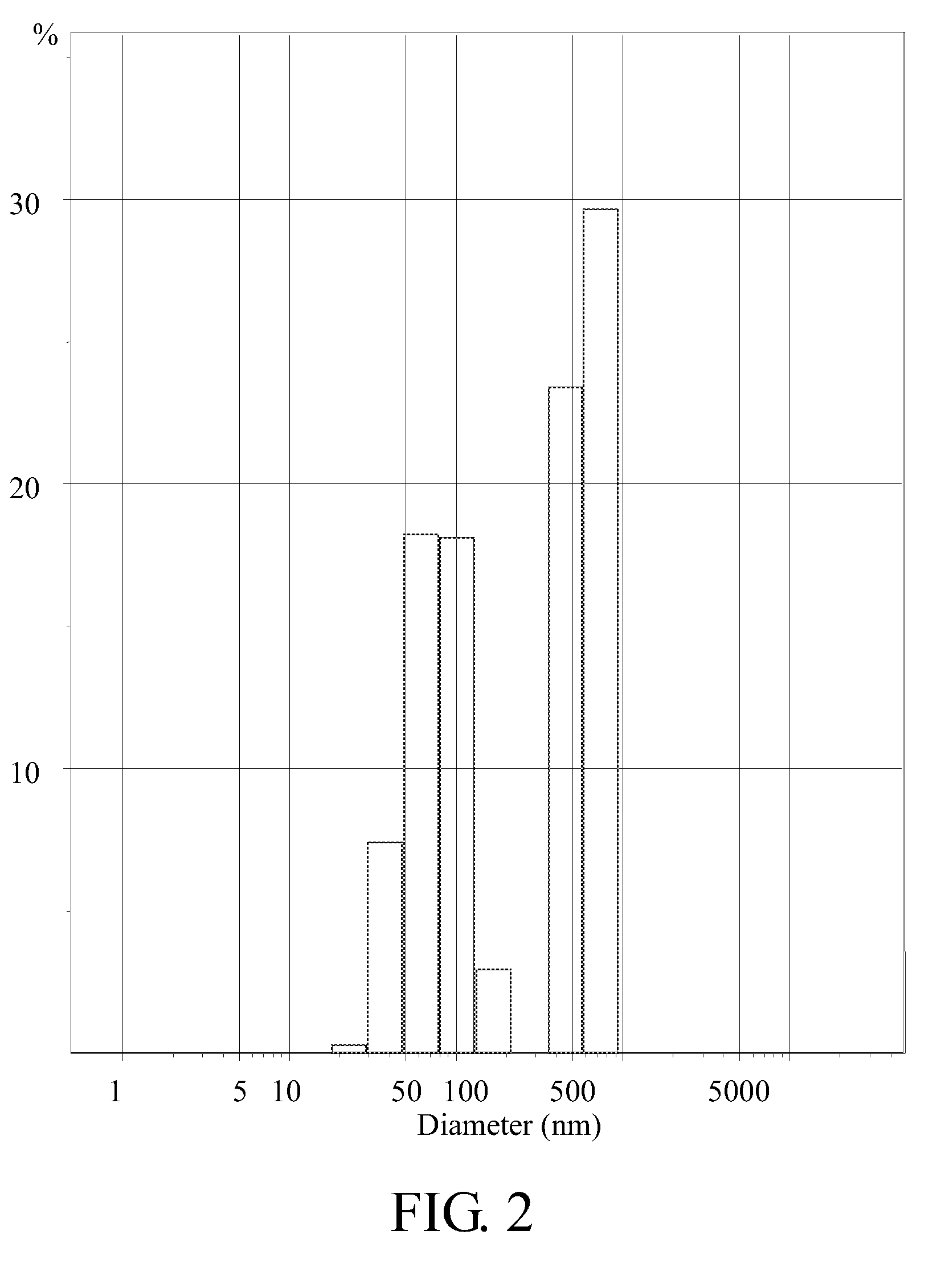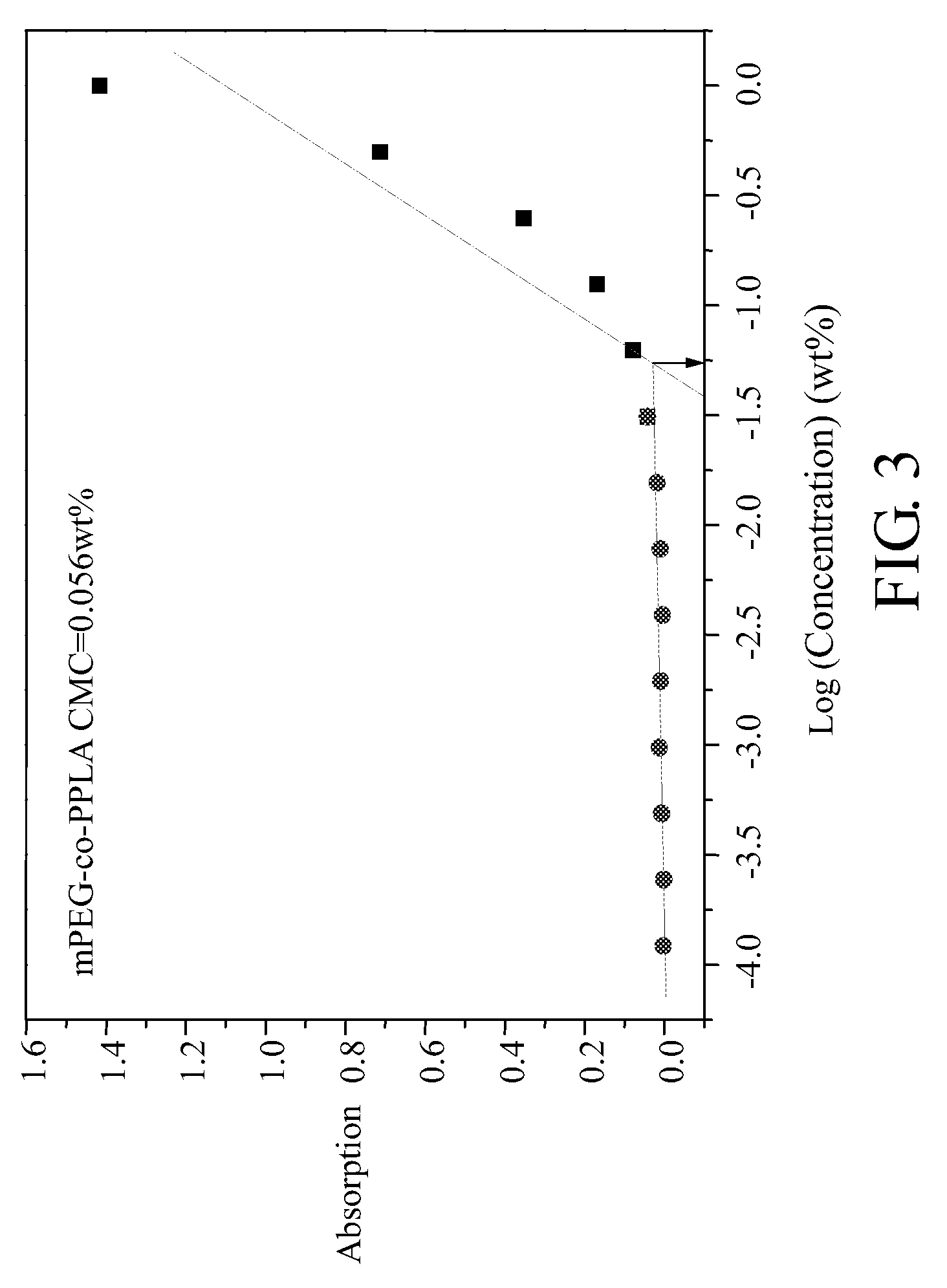Biodegradable copolymer and thermosensitive material
a biodegradable, copolymer technology, applied in dental prosthetics, impression caps, surgery, etc., can solve the problems of bone fragment fixation in a comminuted or joint fracture one of the most challenging procedures, bone fragments increase the risk of destruction into a more powdery form, blood circulation and bone healing degrade,
- Summary
- Abstract
- Description
- Claims
- Application Information
AI Technical Summary
Problems solved by technology
Method used
Image
Examples
example 2
Copolymer of Methoxy Endcapped Polyethylene Glycol and Lactide / δ-Valerolactone Random Copolymer, Hereinafter mPEG-PVLA
[0065]17.03 g of methoxy endcapped polyethylene glycol (mPEG, Molecular weight is 550 g / mol), 33.6 g of lactide, and 10.0 g of δ-valerolactone were subsequently charged in an anhydrous reactor, and the reactor temperature was slowly increased until the substances were totally dissolved. The temperature was continuously increased to 160° C., and 34.0 μL stannous catalyst (stannous 2-ethylhexanoate) was added in the reactor to process polymerization at 160° C. for 8 hours. The reaction is shown in Formula 7. The reaction result was precipitated in ethyl ether / hexane (volume ratio is 1:9) as a semitransparent gel. The semitransparent gel was washed three times to remove monomers and then dried in vacuum at 40° C. for 24 hours to obtain product mPEG-PVLA.
[0066]The copolymer mPEG-PVLA has an NMR spectrum as shown in FIG. 6, and a diameter analysis with instrument Zetasize...
example 3
Copolymer of Methoxy Endcapped Polyethylene Glycol and Lactide / ε-Caprolactone Random Copolymer, Hereinafter mPEG-PCLA
[0067]17.62 g of methoxy endcapped polyethylene glycol (mPEG, Molecular weight is 550 g / mol), 33.6 g of lactide, and 11.4 g of ε-caprolactone were subsequently charged in an anhydrous reactor, and the reactor temperature was slowly increased until the substances were totally dissolved. The temperature was continuously increased to 160° C., and 35.0 μL stannous catalyst (stannous 2-ethylhexanoate) was added in the reactor to process polymerization at 160° C. for 8 hours. The reaction is shown in Formula 8. The reaction result was precipitated in ethyl ether / hexane (volume ratio is 1:9) as a semitransparent gel. The semitransparent gel was washed three times to remove monomers and then dried in vacuum at 40° C. for 24 hours to obtain product mPEG-PCLA.
[0068]The copolymer mPEG-PCLA had an NMR spectrum as shown in FIG. 10, and a diameter analysis with instrument Zetasizer...
example 4
Copolymer of Methoxy Endcapped Polyethylene Glycol and Lactide / γ-Thiobutyrolactone Random Copolymer, Hereinafter mPEG-PSLA
[0069]18.43 g of methoxy endcapped polyethylene glycol (mPEG, Molecular weight is 550 g / mol), 40 g of lactide, and 7.083 g of γ-thiobutyrolactone were subsequently charged in an anhydrous reactor, and the reactor temperature was slowly increased until the substances were totally dissolved. The temperature was continuously increased to 160° C., and 26.026 μL stannous catalyst (stannous 2-ethylhexanoate) was added in the reactor to process polymerization at 160° C. for 8 hours. The reaction is shown in Formula 9. The reaction result was precipitated in ethyl ether / hexane (volume ratio is 1:9) as a semitransparent gel. The semitransparent gel was washed three times to remove monomers and then dried in vacuum at 40° C. for 24 hours to obtain product mPEG-PSLA.
[0070]The copolymer mPEG-PSLA had an NMR spectrum as shown in FIG. 14, and a diameter analysis with instrumen...
PUM
| Property | Measurement | Unit |
|---|---|---|
| diameter | aaaaa | aaaaa |
| phase transfer temperature | aaaaa | aaaaa |
| phase transfer temperature | aaaaa | aaaaa |
Abstract
Description
Claims
Application Information
 Login to View More
Login to View More - R&D
- Intellectual Property
- Life Sciences
- Materials
- Tech Scout
- Unparalleled Data Quality
- Higher Quality Content
- 60% Fewer Hallucinations
Browse by: Latest US Patents, China's latest patents, Technical Efficacy Thesaurus, Application Domain, Technology Topic, Popular Technical Reports.
© 2025 PatSnap. All rights reserved.Legal|Privacy policy|Modern Slavery Act Transparency Statement|Sitemap|About US| Contact US: help@patsnap.com



